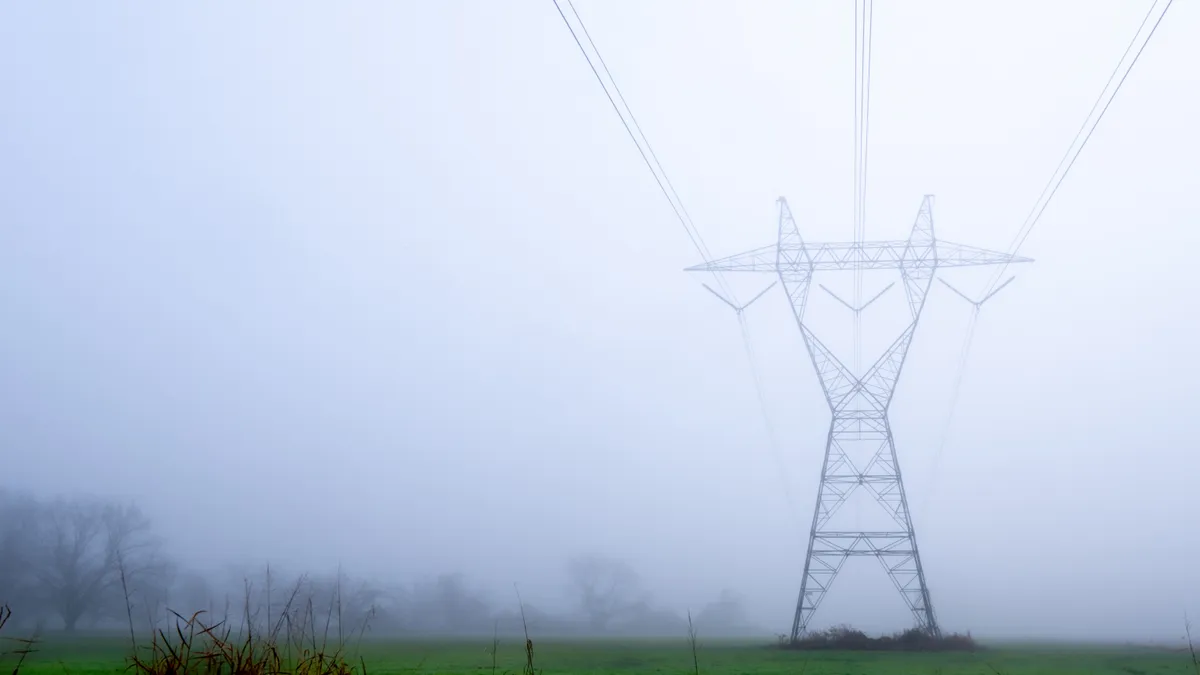State utility regulators are urging the PJM Interconnection and the Midcontinent Independent System Operator to bolster joint long-term interregional transmission planning between their footprints.
“The transition from dispatchable thermal generators to intermittent, clean energy resources, and a surge in electric demand raise challenges to PJM, MISO, and their interconnected neighbors’ ability to reliably and cost-effectively support one another when called upon,” the Organization of MISO States, or OMS, and the Organization of PJM States Inc., called OPSI, said in a joint Jan. 26 letter.
The issue of interregional transmission is heightened by increasingly extreme weather, according to OMS and OPSI, which represent state utility regulators. During an August heatwave, for example, MISO imported 8.5 GW from PJM and Manitoba, they said.
“Expanding transfer capacity between regions can help to improve grid resilience and minimize the negative impacts of extreme weather events,” OMS and OPSI said.
OMS and OPSI called on MISO and PJM to work together on joint transmission modeling; to work with state regulators to determine reliability objectives and state policy objectives; and to take advantage of existing processes to plan new transmission holistically.
MISO and PJM have little to show as a result of their joint interregional transmission planning to date, according to Kent Chandler, OPSI president and chairman of the Kentucky Public Service Commission.
While PJM and MISO have explored several projects through their Interregional Planning Stakeholder Advisory Committee, “it's not a holistic discussion about coordination and planning and operations,” Chandler said in an interview Tuesday.
One pathway for adding interregional transmission is to focus on its reliability benefits, according to Chandler.
“Whatever we can do to cost effectively increase reliability, I'm for it,” Chandler said. “And we haven't fully kicked the tires on what benefits there may be from increasing interregional planning or interregional coordination.”
PJM does collaborate with its neighbors through joint operating agreements to identify transmission projects that can relieve congestion to allow for transfers that can effectively and cost-effectively address reliability, Jeffrey Shields, a PJM spokesman, said in an email.
PJM is committed to working with MISO and others to determine if more should be done with interregional transmission and that discussion is ongoing, he said.
“PJM believes that the best way forward is with analysis on how best to define whether and what level of transmission solutions are needed to ensure sufficient interregional transfer capability,” Shields said. “We need to understand very clearly what the problem is that we’re solving for before committing significant investments that will be borne by customers.”
MISO has a long history of performing coordinated interregional transmission planning with its neighboring grid operators, according to Brandon Morris, a spokesman for the grid operator. “Interregional planning helps us identify projects that improve the system’s ability to mitigate constraints, respond to extreme weather, and increase interregional transfer capability,” he said in an email.
MISO continually looks for ways to improve its transmission planning processes, including interregional planning, Morris said. “MISO values the input from its stakeholder community in these efforts,” he said. “We look forward to enhancing our work with our neighboring transmission planning partners while balancing our staffing needs to identify and move forward the regional and interregional solutions needed to respond to the evolving resource mix.”
Neither Shields nor Morris said how much transmission has been built recently between their footprints.
In their letter, OMS and OPSI cited a Department of Energy transmission needs study that identifies “major opportunities” for interregional projects to deliver benefits, the Federal Energy Regulatory Commission’s consideration of setting minimum transfer capability requirements between regions and Congress’ directive to the North American Electric Reliability Corp. to study interregional transmission capacity.
In its national transmission study released in October, DOE found that the border between PJM and MISO needs between 27.9 GW and 51.7 GW of new transfer capacity by 2035 to handle moderate load growth and high amounts of new clean energy.
A recent report from the American Council on Renewable Energy found that increased transmission capacity between the PJM and MISO could save more than $15 billion by 2035 by reducing the need for generating capacity.
The report was discussed at a transmission summit held in November by the Midwestern Governors Association and OMS. Illinois Gov. JB Pritzker, D, chair of the Midwestern Governors Association, made interregional transmission the organization’s top priority under his ongoing tenure as head of the group.























